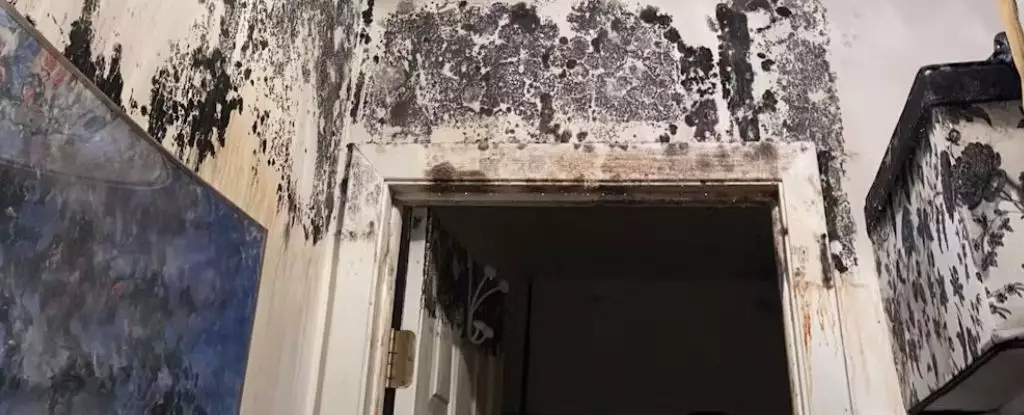Mold is an omnipresent organism that thrives in various environments, often without our awareness. Small patches of black or green stains on walls might first appear as a minor nuisance, but these could signify a much larger issue. Distinguishing harmful mold from benign types is crucial for maintaining a safe living space. With over a million species of fungi existing worldwide, while some serve vital functions in medicine and ecology, certain molds pose health risks, particularly to individuals with respiratory issues, such as asthma and severe allergies.
While the notion of mold is often associated with disaster scenarios—like flooding and plumbing failures—it’s essential to remember that many species of mold exist and reproduce in every home, including the tidiest ones. Even a well-kept house likely harbors slight traces underneath sinks and in damp areas. The crux of the issue lies in the capacity for these microorganisms to proliferate into concerning colonies when conditions turn favorable—predominantly moisture.
Mold plays an integral role in our ecosystem as nature’s recyclers. These organisms specialize in breaking down organic materials, thereby enriching the soil with nutrients that facilitate plant growth. However, when mold finds a home within our walls, it can quickly become a household menace.
Spores, which are microscopic and circulate in the air, are a key part of a mold’s life cycle. With every breath, we inevitably inhale thousands of spores, many of which will land on various surfaces within our homes. Upon landing, these spores can germinate and develop into elaborate networks of fungal growth, often unnoticed until they become visibly problematic.
Mold thrives particularly where moisture accumulates, making basements, bathrooms, and kitchens prime candidates. Areas with persistent plumbing leaks or places that have suffered water damage can become breeding grounds for particularly virulent species.
Indoor molds boast a variety of species, each with its own environmental preferences and characteristics. Common mold strains, such as Aspergillus, Penicillium, and Cladosporium, can often be identified by experts using spores under a microscope. Stachybotrys, often termed “toxic black mold,” has gained notoriety following health concerns linked to its presence in damp homes. This type of mold not only proliferates on wet drywall but can also release mycotoxins that may pose health risks in extreme cases, notably in the context of extensive damage or significant flooding.
Professional mold assessors can determine the extent of mold infestations in homes through in-depth air quality testing. They compare indoor air to outdoor samples, identifying disparities that may indicate hidden mold growth. Elevated concentrations of spores in indoor settings can exacerbate allergic reactions, not just due to the fungi themselves but also owing to secondary byproducts like mycotoxins that some molds produce.
Exposure to mold can induce various health problems, ranging from mild allergic reactions to severe respiratory conditions. The spores released into the air can lead to asthma attacks or allergic reactions in sensitive individuals. While the link between mycotoxins found in indoor mold and serious illnesses requires further study, caution is well-advised in homes experiencing significant mold issues.
Of particular concern is the risk that mold poses to vulnerable populations, including children and those with preexisting respiratory conditions. In the rare cases where mold becomes excessively concentrated, it could lead to severe health implications. This is particularly concerning with specific types of mold, like Stachybotrys, which has been associated with tragic outcomes in infants being exposed excessively to its spores in water-damaged environments.
Eliminating mold from the home requires a proactive approach focused on eliminating moisture sources. For minor mold growth, homeowners can usually manage the problem themselves by cleaning visible mold with appropriate cleaning agents. However, more extensive growth, particularly in structural components like drywall, may necessitate professional remediation to ensure safety and compliance with health guidelines.
Long-term prevention also involves regular maintenance checks of plumbing, roofs, and areas prone to moisture accumulation. A well-ventilated home is less likely to experience significant mold problems. Implementing dehumidifiers, improving airflow, and swiftly addressing leaks can create an inhospitable environment for mold to thrive.
Understanding mold is a critical skill for homeowners. Mold is not just an aesthetic issue; it has implications for health and safety. By recognizing the signs of mold growth, knowing how to respond to it, and actively preventing it, homeowners can maintain a clean and healthy living environment. Knowledge and vigilance are essential in combating mold, minimizing its health risks, and ensuring that our homes remain safe sanctuaries for everyone who lives in them.

